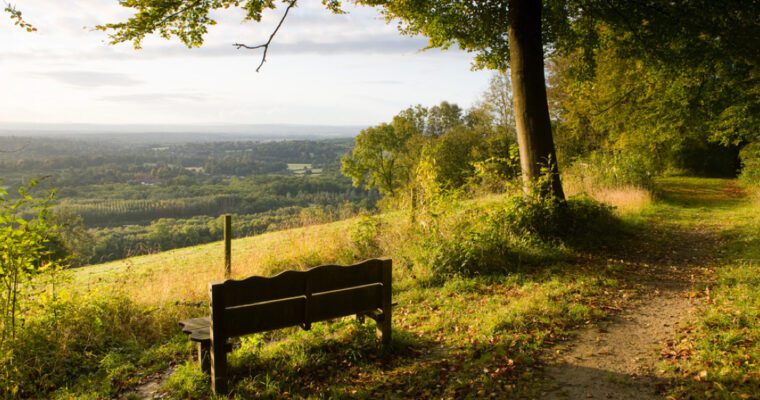Folkestone Downs
Folkestone Downs has spectacular views across the town and it is linked to the important wildlife sites of Creteway Down and Folkestone Warren. White Cliffs Countryside Partnership manage 72 hectares of the Downs including Castle Hill, Sugarloaf Hill, Round Hill and Cheriton Hill.
The Downs have a long history of human occupation that stretches back more than 4,000 years, with excavations revealing a Bronze Age settlement at the foot of Sugarloaf Hill and the impressive earthworks of a Norman motte-and-bailey fort on the summit of Castle Hill.
The site is also home to the Folkestone White Horse, the youngest chalk hill figure in the UK. The horse is on a steep slope, and as the land is a SSSI (Site of Special Scientific Interest) and a SAC (Special Area of Conservation), so access is restricted. However, great views of the hill figure can be enjoyed from across Folkestone, including from the public footpath beneath the downs.
Look out for Adonis blue and marbled white butterflies, the rare straw belle moth, and chalk grassland wildflowers including a number of orchid species.
It is possible to walk all over Folkestone Downs, although visitors should take care on steep muddy slopes and watch out for grazing livestock.
The North Downs Way National Trail passes through the area and cyclists can also enjoy Folkestone Downs on National Cycle Route No 2 that leads from Dover through Folkestone, and on to the West Country.
Easy access information
This park and open space contains uneven trails, un-surfaced or narrow pathways. Also, there are width restricting features, such as stiles and narrow gaps making it difficult for visitors with pushchairs and/or wheelchairs to access some parts of the site.

